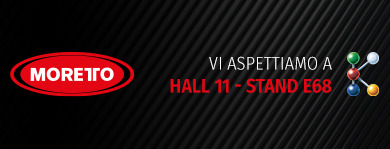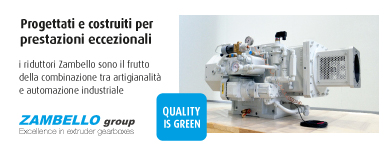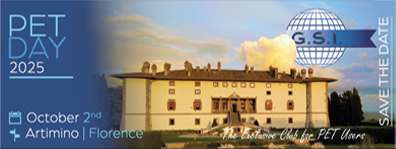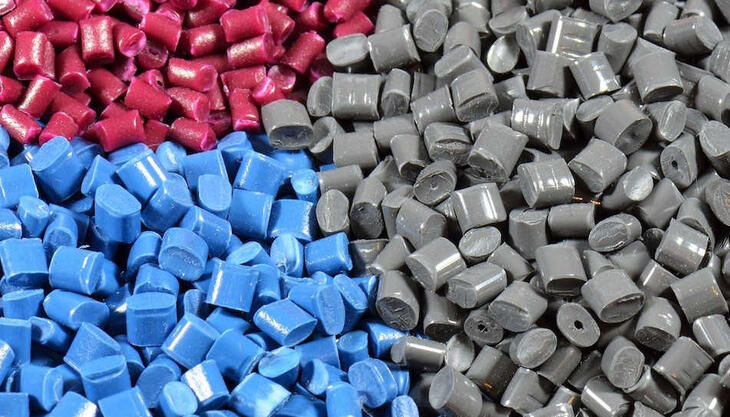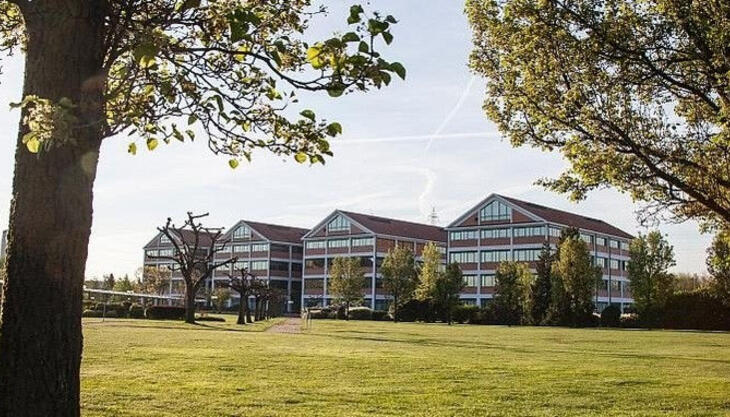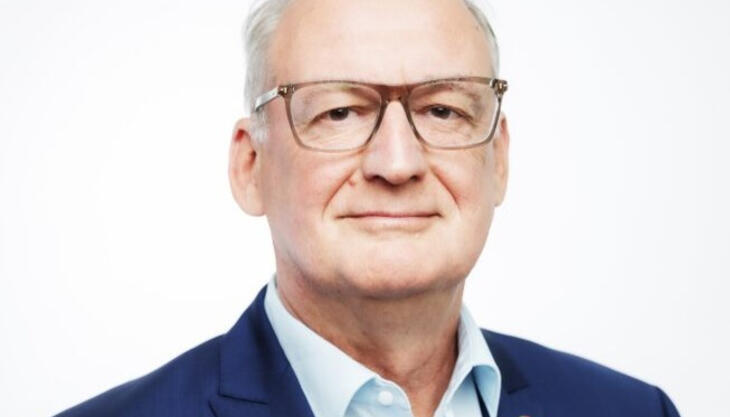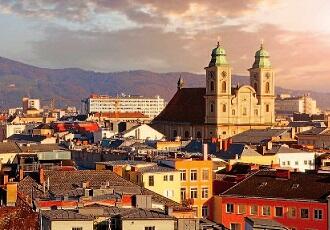
The General Meeting of Amaplast took place on June 14 in Linz (Austria), appointing the nine members of the General Board for the 2018-2020 term. The decision to hold the meeting of the association outside Italy was dictated by the fact that an Euromap meeting had been scheduled to take place in Linz on June 15. In this way the Italian representatives were also able to attend this important event, optimizing logistics and trips.
As regards the General Board of Amaplast the following members were elected: Mauro Drappo (Amut), Maria Grazia Colombo (BFM), Gianni Luoni (Elba), Alessandro Balzanelli (FB Balzanelli), Anthony Caprioli (Macchi), Tiziano Caprara (Negri Bossi), Gianfranco Cattapan (Plastic Systems) – who takes over from Gabriele Caccia (Syncro) - Dario Previero (Previero) and Barbara Ulcelli (IMG).
Plast 2018
In his speech, Amaplast President Mr Alessandro Grassi (shown at the centre of the photo), touched on the most current issues relating to the association’s activity, and in relation to the plastics and rubber sector as a whole. Starting with some comments on the 2018 edition of Plast (the triennial international fair which recently closed its doors at the Fiera Milano exhibition centre in Rho) highlighting the fact that the exhibition has been given a new lease of life thanks to the synergy generated by The Innovation Alliance.
Following a number of editions during which the exhibition experienced a drop in visitors (even though it has been slight one, especially if compared to other similar machinery fairs), the popularity of Plast is now once again on the rise. The area occupied by foreign exhibitors increased by 20%, with approximately 63 thousand visitors (a conservative estimate, in view of the fact that that it was possible to access all five exhibitions of The Innovation Alliance with a single ticket, meaning that it has not been possible to accurately record the numbers of visitors that attended more than one exhibition) which means a 25% increase as compared to Plast 2015.
Aside from the mere figures, the quality of the buyers that attended the exhibition was of a high level, and therefore it is not by chance that several Amaplast members reported sales of machinery and plants directly at the fair. In certain cases these sales were the conclusion of negotiations already underway, while in others, the sales have been the result of the opportunities provided by the fair itself.
Talking about the results of Plast 2018, Alessandro Grassi stated: “All the members of the General Board, together with myself, have had great faith in The Innovation Alliance project; our administrative secretariat has worked very hard on this, but I believe I can say that the results are tangible.”
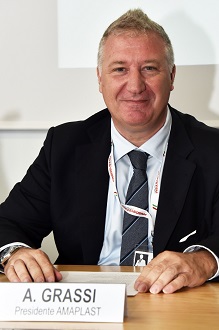 2017 figures
2017 figures
As regards the Italian machinery industry performance, the figures relating to 2017 confirm that the trade balance (the difference between exports and imports) has been recording a surplus for several years now. The machinery manufacturing sector makes a very relevant contribution to the Italian domestic economy. The Amaplast president commented: “Unfortunately, at an international level we pay the price of being famous above all for fashion, design and food. Whilst the words fashion and design are instinctively associated with Italy, the words machinery and precision tend to be linked to Germany. It is hard to break the habit, but all our efforts through these years, is gradually working to change this stereotypical image.” In further details, the year 2017 has proved the best year ever for all indicators of the Italian plastics and rubber machinery sector.
- output has risen by approximately 10% as compared to 2016, reaching 4.7 billion euros;
- exports have exceeded 3.3 billion (+11%);
- imports showed a 14% increase at just under a billion euros, highlighting the renewed buoyancy of the Italian domestic market;
- the domestic market and the trade surplus have exceeded 2.3 billion, with an increase of approximately 10% each.
Grassi went on to state: “Another fact that I consider to be relevant is the 5% increase in employees, rising from just under 7,800 to almost 8,200: another healthy sign.”
Exports
As far as Italian exports of plastics and rubber machinery are concerned, the European Union continues to be Italy’s main outlet market, accounting for almost 52% of the total. Germany has been the leading destination market for decades now, and in terms of total value is worth over 481 million euros, with a 20% increase as compared to 2016. While always in Europe, but outside the European Union, Russia continues to be an excellent market with 95 million euros (+67%), making it a strategic destination for many Italian companies.
The Nafta countries account for around 13.7% of the total export value, with the United States showing a 20,4% increase, while Mexico was 16.7% down, which however may be considered an acceptable result on the back of the record figures of 2016 and 2015. Italian exports to South America (which accounts for 4.7% of the total) instead rose by 13%, mainly as the result of deliveries to Brazil (+37.8% compared to 2016), another strategic country in terms of sales.
Shrinking figures have been recorded for exports to the Middle East (-13.7%, accounting for 3% of the total), in the light of the decline in two important countries - Saudi Arabia and Iran - which has not been offset by the excellent trend of Israel. The economic sanctions to Iran are causing great alarm amongst the Amaplast member companies, and apart from the purely political aspects (fortunately, the position of the European Union seems to be diverging from that of the USA), it is necessary to take into account that the United States will exert pressure not only on the banking system, but on the whole business sphere of Iran. The secretariat of Amaplast is monitoring the situation, as far as possible, and in the coming days Confindustria is set to hold a meeting on the issue.
The Far East, which accounts for 11.5% of total Italian exports, has slightly exceeded 5% in growth, despite the negative performance of China (-2,5%) and India (-6%) but thanks to Japan, Thailand and Malaysia, which have shown a clear growth in demand.
Last but not least comes Africa, a continent with which our country has historic links, although limited to South Africa and the countries around the Mediterranean coastline. Its total share of Italy’s exports is similar to that of 2016 (approx. 5%) although sales have risen by 15%. There is also an entire market, that of the sub-Saharan countries, which shows considerable potential. For this reason, the General Meeting has delegated the secretariat of the association to carefully monitor these markets.
Amaplast attended the PlastPrintPak Nigeria exhibition last March, and will be shortly evaluating with its members the viability of participating in small collective delegations in this area of Africa. The association is also trying to forge contacts with potential local partners, which is no easy matter, to boost market fact finding on the ground, source new sales agents etc.
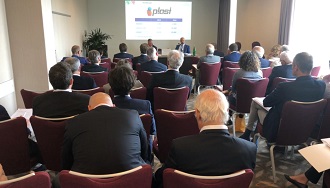 The Italian domestic
market
The Italian domestic
market
In 2017, the domestic market has proved very rewarding for plastics and rubber machinery manufacturers, the figures speaking for themselves with a +14% rise in imports, almost totaling 1 billion euros. This change in pace, over and above the general (although slow) upturn, can be also attributed to the Industry 4.0 incentive programme, promoted by the former minister for Economic Development, Carlo Calenda, which came into force on 1st January 2017. The programme has been carried through to 2018 as well, proving to be an even more logical and effective instrument.
Alessandro Grassi stated: “When I was personally contacted by the newspaper, Il Sole 24 Ore, in order to make an assessment on the impact of the hyper-amortization programme on the Italian market, I preferred to provide a conservative estimate (approx. +10-15%), as compared to other machinery manufacturer associations, based also on the information acquired by our administrative department and the information that some of you directly provided to me. What is obvious is that there has been a return to greater growth in investments on the part of Italian processors, and this is very good news for us. However we expect major challenges in the near future, and forgive me for the well-worn phrase ‘we must not rest on our laurels!’.”
Campaigns against plastics
The issue of media campaigns against plastics was also raised, especially as they have intensified in recent months. In fact every day now we are bombarded with articles, videos and photographs against plastic. For the World Environment Day of 5th June the United Nations selected the theme “Beat Plastic Pollution” against plastic disposables, while one of Italy’s leading newspapers ran the headline “Giornata mondiale dell’ambiente: tutti insieme contro la plastica (World Environment Day: all together against plastics)”. Industry operators are perfectly aware that most of the problems are linked to the handling of disposable packaging, but the fact remains that those who are not actually in the field tend to generalize the issue, creating an aversion towards plastic as a whole. The European Union has already taken steps, through the adoption of a new an ambitious package of measures in favour of the so-called circular economy.
In relation to this, the Amaplast president declared: “I however am convinced that technology, and therefore the machinery and equipment used for plastic and rubber processing, can play an important role in the little big revolution that is due to take place. I refer not only to recycling systems (a sector in which we have some of the leading international companies), but also to the capacity/potential of many of our machines to process virgin, recycled and biopolymer materials, of reducing the thickness of caps, bottles, film etc. As I have already said the issue and its implications are far-reaching, and the General Board has already spoken of it, and will do so again, in order to better understand the role that we can play in the Circular Economy”.








